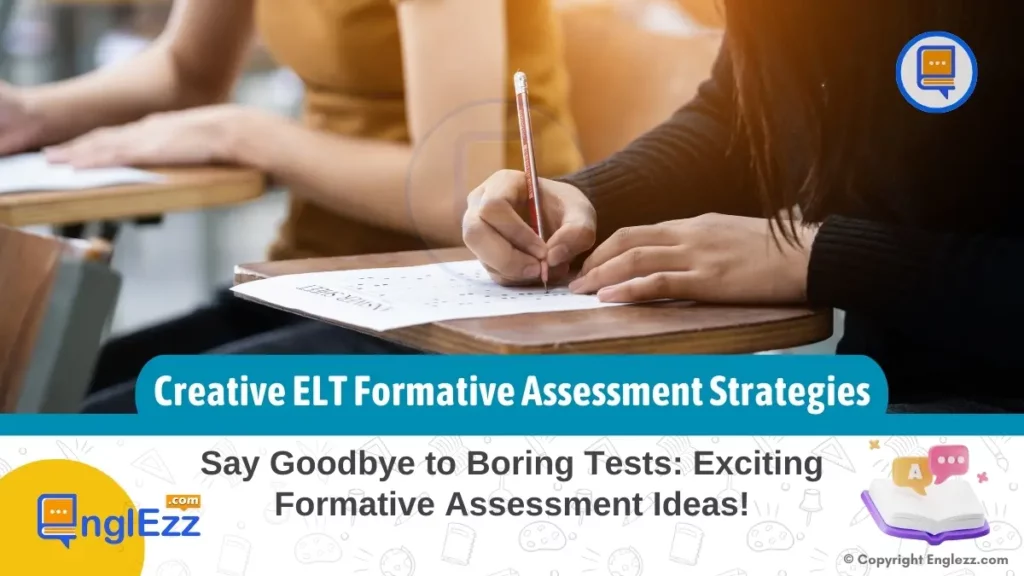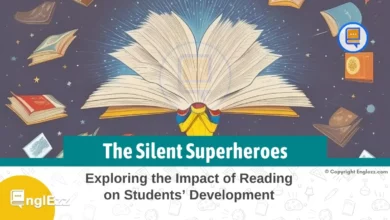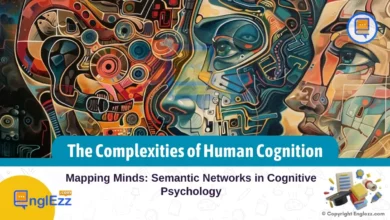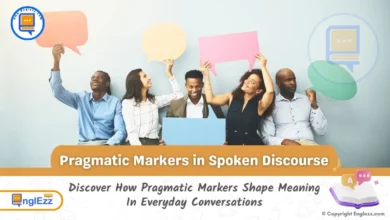In the dynamic landscape of English Language Teaching (ELT) classrooms, the role of formative assessment stands as a guiding light, illuminating paths to success for both educators and learners. By embracing the power of ongoing feedback and evaluation, teachers can finely calibrate their instructional approaches while students embark on continuous journeys of growth and improvement. However, what truly sets exceptional ELT practices apart is the infusion of creativity into these formative assessment strategies – crafting experiences that not only inform progress but also ignite inspiration within the classroom.
Creative ELT Formative Assessment Strategies
Imagine a realm where assessments become not mere checkpoints, but vibrant canvases for innovation; where feedback isn’t just about correction but transformation. This paradigm shift introduces us to a realm where educators are catalysts of creativity and students are co-creators in their learning journey. The intersection between formative assessment and creative teaching strategies sparks a symphony of engagement, curiosity, and collaboration. As we delve into uncharted territories together, we discover that assessments aren’t confined by scores but empowered by imaginative endeavors to foster lifelong learning pursuits.

Embracing this transformative mindset opens doors to endless possibilities in ELT classrooms, where every trial becomes a tonic for triumph and every challenge an opportunity for growth. Join us on this voyage as we explore seven innovative and inspiring formative assessment strategies tailor-made for achieving ELT excellence – because in assessment lies not just success but the keys to unlock boundless potentials for those who dare to innovate and inspire.
Interactive Digital Tools
In the digital age, incorporating interactive tools into English Language Teaching (ELT) classrooms has become imperative for providing personalized and efficient formative assessments. Online quizzes offer teachers valuable insights into student comprehension levels instantly, allowing for immediate feedback and targeted intervention. For example, platforms like Kahoot! or Quizizz not only engage students through gamified quizzes but also generate detailed performance reports for educators to analyze strengths and weaknesses in real time.
Educational apps have revolutionized how student progress is monitored and assessed. By leveraging apps like Google Classroom or Socrative, teachers can track individual learning trajectories, identify patterns in skill development, and customize learning experiences accordingly. These apps provide a comprehensive overview of student engagement with assignments, quizzes, and discussions, enabling teachers to make data-driven decisions to enhance educational outcomes effectively.
Moreover, integrating multimedia projects caters to diverse learning styles by encouraging creativity and self-expression among students. Platforms such as Buncee or Adobe Spark enable learners to showcase their language proficiency through videos, presentations, or digital storytelling. By tapping into various multimedia formats, educators can gain a holistic understanding of students’ linguistic abilities beyond traditional assessments, fostering a dynamic and inclusive learning environment that celebrates individual talents and interests in ELT settings.
Engaging Peer Evaluation Techniques
In the realm of English Language Teaching (ELT), peer evaluation techniques serve as invaluable tools for fostering collaborative learning environments. By setting up peer review sessions, students not only gain insight from their peers but also improve their own critical thinking skills through evaluating others’ work. For instance, a creative writing assignment can be enhanced by implementing peer feedback sessions where students provide constructive criticism on each other’s narratives. This process not only refines the students’ writing abilities but also encourages them to actively engage with and learn from their peers.
Constructive criticism rubrics play a pivotal role in guiding students to provide insightful feedback during peer evaluations. These rubrics serve as structured frameworks that highlight key elements for assessment, ensuring that feedback is constructive and targeted. For instance, in language speaking exercises, a rubric focusing on pronunciation, fluency, and vocabulary usage can assist students in offering specific and helpful comments to their peers. By incorporating these rubrics into peer evaluation practices, ELT educators empower students to develop not only their linguistic proficiency but also their ability to assess and provide meaningful feedback effectively.
Furthermore, group projects are excellent vehicles for enhancing communication skills among ELT learners while simultaneously promoting cooperative learning experiences. From collaborative presentations on cultural topics to joint research assignments exploring language nuances, group projects encourage students to interact, negotiate ideas, and collectively problem-solve. By participating in such tasks, students not only deepen their understanding of the English language but also acquire essential teamwork skills that are increasingly valuable in today’s interconnected world. Ultimately, incorporating engaging peer evaluation techniques within ELT classrooms nurtures a supportive community of learners who continuously inspire one another towards academic growth and success.
Differentiated Instruction Strategies
In the realm of English Language Teaching (ELT), one size does not fit all, especially when it comes to assessing diverse student populations with varying proficiency levels. Effective differentiated instruction strategies play a crucial role in meeting the individual needs and learning styles of students. By adapting assessments to cater to these differences, educators can ensure that each learner is appropriately challenged and supported in their language acquisition journey. For example, in a mixed-ability ELT classroom, teachers can provide different versions of a task or assessment based on students’ skill levels, allowing everyone to demonstrate their understanding at their own pace.
Personalized learning plans are another powerful tool within differentiated instruction strategies. By tailoring educational experiences to address students’ specific strengths, weaknesses, interests, and goals, educators can create a more student-centered approach to formative assessment in ELT classrooms. For instance, offering students choices in how they demonstrate their language skills—whether through written tasks, oral presentations, or multimedia projects—empowers them to showcase their knowledge in ways that resonate with their unique abilities.
Encourage student autonomy by involving them in goal-setting processes related to their assessments.
Employing tiered activities provides educators with insight into students’ comprehensive skill evaluation beyond traditional tests or quizzes. By offering tasks at different levels of complexity or abstraction related to a particular language concept, teachers can gauge not only what students know but also how deeply they understand the material. This approach encourages critical thinking and problem-solving skills while ensuring that every student is appropriately challenged and supported in their language development journey. Ultimately, adopting differentiated instruction strategies in formative assessment fosters an inclusive and enriching ELT environment where all learners have opportunities to thrive and grow.
Gamified Learning Assessments
Gamified learning assessments offer an exciting way to enhance engagement and motivation in the ELT classroom. By integrating game-based assessments, teachers can leverage students’ natural inclination towards competition and fun to make the learning experience more interactive. For example, incorporating language challenges within popular gaming platforms or designing educational escape room activities can create a dynamic environment where learners are eager to participate and showcase their language skills.
Competitive Classroom Challenges
Developing friendly yet competitive classroom challenges not only adds an element of excitement but also fosters collaboration among students. For instance, dividing the class into teams for language quizzes, spelling bees, or vocabulary races encourages peer interaction while emphasizing teamwork and communication skills. This approach not only promotes healthy competition but also cultivates a sense of camaraderie and support among students as they work towards common goals.
Use Motivational Tools
Using badges and rewards as motivational tools in gamified learning assessments can significantly impact student engagement and progression. Offering virtual badges for achievements such as mastering challenging grammar rules, completing tasks before deadlines, or participating actively in discussions can boost confidence and incentivize continuous improvement. Moreover, rewarding students with points that accumulate towards tangible incentives like extra credit, special privileges, or classroom recognition further reinforces positive behavior and active participation in language learning activities. By gamifying the assessment process, educators can create a stimulating educational landscape that caters to diverse learning styles while nurturing a passion for language acquisition among students.
Utilizing Visual Aids and Graphic Organizers
Visual aids and graphic organizers are powerful tools that can enhance the learning experience for students in English Language Teaching (ELT) classrooms. By designing mind maps and concept charts, teachers can help students organize their thoughts visually, leading to better comprehension of complex topics. For example, when teaching vocabulary related to a specific theme, creating a mind map with interconnected words can help students see the relationships between different terms, making it easier for them to remember and use the vocabulary effectively in context.
Infographics in ELT
Employing infographics in ELT classes offers a creative way to summarize key points and assess understanding. Imagine using an infographic to illustrate the steps of writing a persuasive essay or showcasing grammar rules in a visually appealing format. Not only does this encourage visual learners to engage more deeply with the content, but it also provides teachers with a quick overview of each student’s grasp on the material. Through infographics, assessment becomes not just about testing knowledge but also about presenting information in an accessible and engaging manner.
Creating visual journals or portfolios as ongoing assessment tools allows students to document their learning journey throughout the course. These personalized collections of work can include writings, drawings, reflections, or multimedia projects that showcase linguistic progress over time. For instance, students could maintain a visual journal where they record new vocabulary learned each week with accompanying illustrations to aid memory retention. By actively involving students in the assessment process through visual representation of their growth, educators promote self-reflection and ownership of learning outcomes in ELT settings.
Project-Based Learning (PBL)
In the realm of ELT, Project-Based Learning (PBL) serves as a dynamic assessment strategy that not only evaluates language acquisition but also cultivates critical thinking and problem-solving skills. By engaging students in long-term projects that tackle real-world issues, educators can create authentic learning experiences that mimic professional challenges. For instance, students could collaborate to design an international marketing campaign in English for a fictitious product, applying language skills while honing their creative communication abilities.
Moreover, PBL offers a platform to integrate cross-disciplinary themes into ELT curricula, fostering connections between language learning and other subjects. Imagine a project where students explore environmental issues through the lens of literature, creating eco-themed podcasts or videos that showcase their language proficiency alongside scientific knowledge. This approach not only deepens language understanding but also encourages learners to draw from various disciplines to enrich their project outcomes.
To ensure effective assessment within PBL initiatives, setting up checkpoints and milestones becomes pivotal. These markers provide opportunities for formative feedback, allowing educators to guide student progress and address any challenges promptly. For example, during a multi-week project on cultural exchanges, teachers can implement regular peer review sessions where students evaluate each other’s work based on established criteria, promoting collaboration and improving the overall quality of project deliverables.
Reflective Journals and Self-assessment Logs
In the realm of English Language Teaching (ELT), leveraging reflective journals and self-assessment logs serves as a powerful tool for students to track their linguistic development and take ownership of their learning journey. Encouraging learners to maintain regular reflective journals not only enhances their metacognitive skills but also fosters a deeper understanding of their strengths and areas for improvement. By prompting students to reflect on language use, classroom experiences, and personal growth, educators can instill a sense of accountability and mindfulness in learners. For instance, journal prompts could range from reflecting on challenging vocabulary encountered during the week to describing a successful communication task, encouraging students to introspect on language proficiency in various contexts.
Integrating self-assessment checklists into ELT classrooms empowers students to evaluate their own progress objectively while honing critical thinking skills. These checklists can be tailored to specific language competencies such as reading comprehension, writing fluency, or speaking accuracy. Through self-assessment tools, learners become active participants in setting goals, monitoring achievements, and identifying areas that require further attention. By creating rubrics or criteria together with students, teachers can cultivate a shared understanding of assessment standards and guide them toward targeted improvement strategies tailored to individual needs.
Foster a growth mindset within your classroom environment by celebrating progress alongside achievements.
Guided prompts play a pivotal role in eliciting profound reflections on language growth within reflective journals and self-assessment logs. These cues challenge students to delve deep into their linguistic development process by posing thoughtful questions that prompt insights on language acquisition milestones or challenges overcome.
By incorporating guided prompts like “Reflect on how you have improved your pronunciation this semester” or “Describe a grammar rule you have mastered recently,” educators can scaffold the self-reflection process effectively while nurturing a culture of continuous improvement among learners. Such exercises not only enhance language proficiency but also promote autonomy and self-directed learning habits that are invaluable beyond the confines of the classroom.
By integrating reflective practices and structured self-assessment mechanisms into ELT pedagogies, educators foster holistic growth in learners by encouraging them to think critically about their linguistic abilities, set personalized learning goals, and engage actively with their progress. Empowering students through reflective journals and self-assessment logs nurtures lifelong learning skills that extend far beyond language acquisition—preparing individuals for success in academic pursuits and professional endeavors where self-awareness and proactive evaluation are key components of achievement in any field.
Enhancing ELT Success Through Creative Formative Assessment
In conclusion, the integration of innovative formative assessment strategies within English Language Teaching (ELT) not only fosters a deeper understanding of language concepts but also cultivates a dynamic educational environment. By incorporating creative assessment methods, educators can tap into the diverse needs and learning styles of students, propelling them towards academic success. When teachers embrace varied techniques such as gamified learning assessments or interactive digital tools like online quizzes and multimedia projects, they unlock new avenues for engagement and knowledge retention in their classrooms.

Furthermore, creativity plays a pivotal role in enhancing ELT outcomes as it encourages both educators and learners to think outside traditional assessment paradigms. For instance, by utilizing visual aids and graphic organizers to assess understanding or by implementing project-based learning activities that address real-world issues, students are inspired to apply language skills in authentic contexts. This approach not only solidifies language comprehension but also instills critical thinking and problem-solving abilities crucial for successful language acquisition.
Always seek feedback from both students and colleagues to continuously refine and improve your assessment strategies.
Educators are encouraged to explore and implement the wealth of creative formative assessment techniques discussed in this article to transform their ELT classrooms into vibrant hubs of learning. By embracing differentiation through personalized learning plans, integrating peer evaluation techniques for collaborative growth, infusing gamified elements for motivation, incorporating visual aids for clarity, delving into project-based approaches for practical application, maintaining reflective journals for self-assessment – teachers have at their disposal a rich arsenal of tools to revolutionize language education.
As the educational landscape evolves, staying abreast of these innovative strategies ensures that every student has the opportunity to thrive linguistically and academically. It is through creativity in formative assessment that ELT truly fulfills its potential as a vehicle for linguistic empowerment and personal growth.
Implementing such versatile methodologies allows educators not just to measure progress but actively foster it by creating an environment where exploration, experimentation, and collaboration are celebrated. As we navigate the complexities of teaching English as a second language, let us remember that creativity is not just an added bonus but a fundamental pillar upon which transformative education stands.
Final Tips
- Embrace Flexibility: One key tip for successful formative assessment in ELT is to remain flexible and adapt your strategies based on student needs and feedback. Just as language learning is a dynamic process, so should be the assessment methods used to track progress effectively. For example, if you notice that a particular group of students responds better to visual aids, consider incorporating more graphic organizers into your assessments to enhance comprehension and engagement.
- Foster a Growth Mindset: Encourage students to view assessments not as measures of success or failure, but as opportunities for growth and improvement. By promoting a growth mindset in the classroom, you can create a positive learning environment where mistakes are seen as valuable learning experiences rather than obstacles. This approach can empower students to take ownership of their language development journey and actively participate in the assessment process.
- Cultivate Reflective Practices: Encourage students to engage in regular reflection on their language learning progress through journaling or self-assessment logs. By fostering reflective practices, you can help learners gain insight into their strengths and areas for improvement, ultimately leading to more meaningful educational experiences. Providing guided prompts or questions can guide students in deep introspection about their language growth and encourage critical thinking skills.
By incorporating these tips into your ELT formative assessment practices, you can create a stimulating and supportive learning environment that promotes student growth and proficiency in the English language. Remember that assessment is not just about evaluating performance; it’s about guiding learners on their path towards mastery while celebrating their achievements along the way.
Enhancing ELT Outcomes Through Creative Assessment
In conclusion, the realm of English Language Teaching (ELT) is enriched by the thoughtful integration of creative formative assessment strategies. As we’ve explored various innovative techniques throughout this article, it’s evident that these methods not only offer valuable insights into student progress but also foster a dynamic and engaging learning environment. By embracing interactive digital tools, peer evaluation techniques, differentiated instruction strategies, gamified learning assessments, visual aids and graphic organizers, project-based learning, as well as reflective journals and self-assessment logs, educators can truly transform their classrooms into hubs of active participation and growth.
By prioritizing creativity in assessment practices, ELT teachers have the opportunity to instill a love for language learning in their students while simultaneously gauging their development effectively. Embracing diverse methodologies broadens pedagogical horizons and ensures that each learner’s unique needs are met with understanding and innovation. As we move forward in the educational landscape, let us continue to explore new avenues of assessment design that not only measure knowledge retention but also spark intellectual curiosity and nurture holistic linguistic abilities in our students.
Remember, your role as an educator extends far beyond imparting knowledge; you are sculptors of minds and cultivators of lifelong learners. With these creative formative assessment strategies at your disposal, you hold the power to shape a generation of language enthusiasts who approach learning with vigor and enthusiasm.
Stay inspired, stay dedicated to excellence!
FAQs:
Q: How can I ensure my formative assessments align with my curriculum objectives?
A: Begin by clearly outlining your learning goals before designing assessments; make sure they directly reflect key components of your curriculum.
Q: What if students struggle with certain types of creative assessments?
A: Offer scaffolding support tailored to individual needs; consider providing additional examples or mini-lessons where necessary.
Q: Are there specific technology tools best suited for implementing these creative strategies?
A: Explore various educational platforms such as Kahoot!, Quizlet, or Padlet that offer interactive features conducive to diverse assessment styles.
Q: How do I manage time constraints while incorporating such elaborate assessment methods?
A: Strategically plan ahead by integrating smaller elements of creative assessment into daily lessons rather than overwhelming yourself with large-scale projects all at once.
Q: Can peer evaluation sometimes cause conflicts among students during the assessment process?
A: Set clear guidelines for constructive criticism within peer review sessions; promote mutual respect through structured feedback protocols to mitigate potential conflicts.








